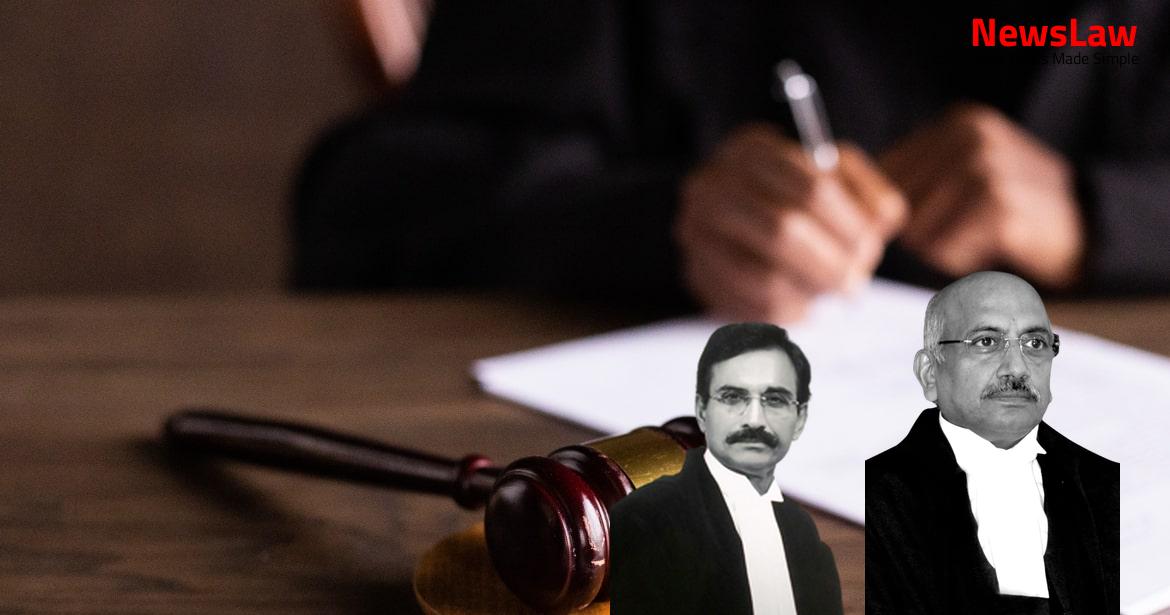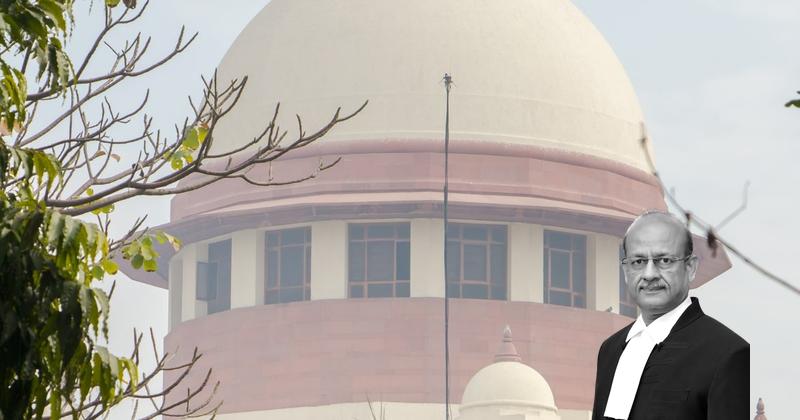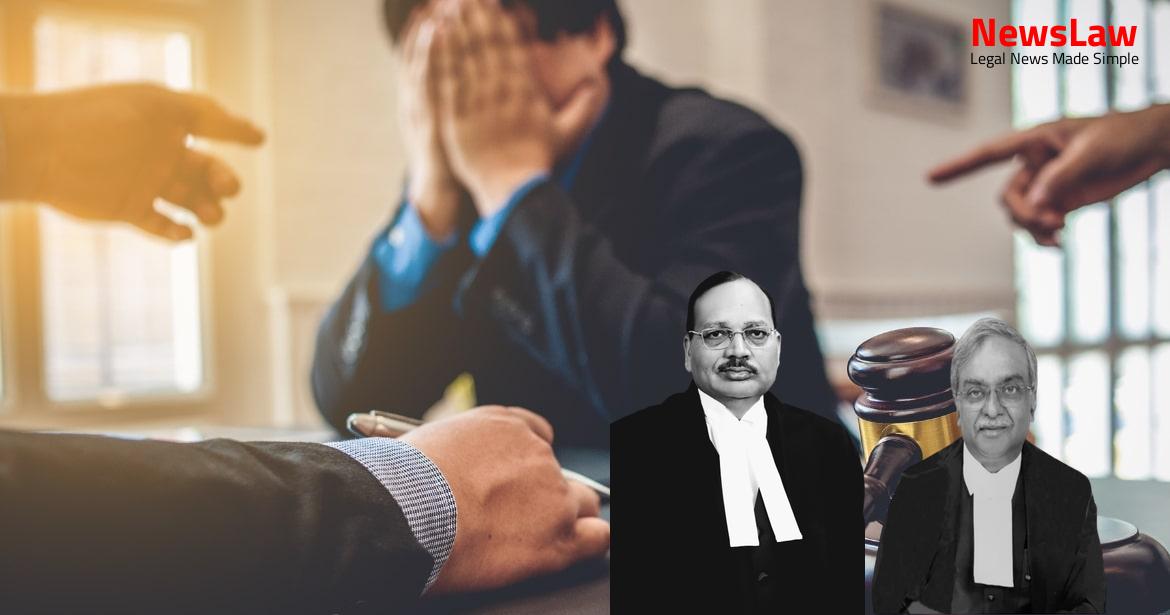Delve into the detailed legal analysis conducted by the court in a recent case where an acquittal verdict was reversed. The court’s methodical approach to scrutinizing circumstantial evidence and its impact on the final judgment showcases the complexities of criminal law proceedings. Stay tuned to unravel the key factors influencing the court’s decision-making process.
Facts
- The High Court held that the dead body was not known to the prosecution until it was recovered in pursuance of a disclosure statement.
- The trial court’s finding regarding the confession of guilt being difficult to draw and exculpatory conclusions being deducible was deemed incorrect.
- The High Court determined that the circumstances established a chain leading to the conviction of all the accused.
- The recovery of the dead body was solely based on disclosure statements.
- The circumstances from which guilt is to be inferred should be fully established and consistent with only one hypothesis according to this Court.
- The High Court set aside the trial court’s judgement in the appeal filed by the complainant, presenting incriminatory evidence against the accused.
- The postmortem report and the Forensic Science Laboratory report pointed towards the use of a gun by the accused.
- The High Court disagreed with the trial court’s finding that the dead body was recovered prior to the disclosure statements made by the accused Satish Kumar and Rajeev Kumar.
- The trial court acquitted all the accused due to the prosecution’s failure to prove guilt beyond reasonable doubt.
- The trial court concluded that the Investigating Officer had knowledge of the dead body, making the recording of the accused persons’ disclosure statements devoid of evidentiary value.
- The recovery of the dead body and the weapon of the offence in pursuance of the disclosure statement was corroborated by the forensic science laboratory report.
- The dead body of deceased Ratti Ram was concealed in Balh Churani forest
- Accused accompanied the Police team to the forest and the body was recovered on 22 December, 2009
- Witnesses Jaswant Singh and Kuldeep Singh were present during the recovery of the body
- Appellants were convicted under various sections of the Indian Penal Code and the Arms Act
- Postmortem revealed multiple injuries and perforated wounds on the deceased
- Statements of the accused were recorded in the presence of witnesses
- Forensic examinations were conducted on the recovered articles
Also Read: Interpretation of Mandatory Statutory Time Limits
Arguments
- The appellant’s counsel argued that since the case relies on circumstantial evidence, the prosecution must prove that the accused acted alone.
- Prosecution witnesses have given conflicting statements that do not form a complete chain of circumstances, leading to doubt regarding the truthfulness of the prosecution’s case.
- Reference to the case of Sharad Birdhichand Sarda v. State of Maharashtra for conditions required to establish a case based on circumstances.
Also Read: Reservation Shortfall for Hindu Nadar Community
Analysis
- The scope of powers of the appellate court against an order of acquittal passed by the trial court under the Code was considered.
- The Court reiterated the principles laid down in previous cases, emphasizing the need for caution and circumspection when interfering with an order of acquittal.
- It was emphasized that the appellate court should not lightly interfere with an order of acquittal unless there are compelling reasons to do so.
- The Court highlighted the importance of giving due weight and consideration to the trial court’s findings and conclusions, especially in cases where the evidence is primarily based on the credibility of witnesses.
- The prosecution failed to establish the guilt of the accused due to contradictions and lack of credible evidence.
- The recovery of the dead body and the recording of confessional statements were not in the correct chronological order.
- The motive behind the alleged crime was not proven by the prosecution.
- The High Court’s convictions under Sections 25 and 27 of the Act lacked proper basis as conditions of the Act were not met.
- Lack of direct evidence linking the accused to the use of the licensed gun in the crime.
- Doubt was cast on the telephone call received by the police due to the absence of call details.
- Chain of events was not established conclusively to remove doubts.
- Different opinions between trial court and High Court are not sufficient to set aside the order of acquittal.
- Statements of witnesses were inconsistent and lacked credibility.
- Absence of clarity on the involvement of each accused in the crime.
- Overall, the prosecution case was weakened due to various inconsistencies and lack of concrete evidence.
- High Court interfered with the findings of acquittal despite a possible conclusion by trial court based on evidence
- Prosecution failed to prove the role of the accused in causing the death of the deceased
- Recovery of the dead body based on disclosure statements of accused not proven
- Absence of evidence on who fired the fatal shot led to benefit of doubt for accused
- High Court’s conviction of the appellants deemed illegal, unwarranted, and unjust
Also Read: Legal Analysis on Will Execution and Proof in Property Dispute Case
Decision
- Both appeals allowed
- Accused set at liberty if not wanted in any other case
- Conviction of the appellants under specified sections set aside
- Order of acquittal by trial court restored
- Bail bonds discharged
Case Title: SATISH KUMAR Vs. THE STATE OF HIMACHAL PRADESH (2020 INSC 251)
Case Number: Crl.A. No.-000019-000019 / 2017



